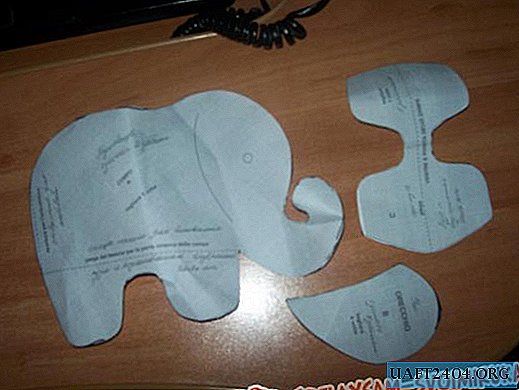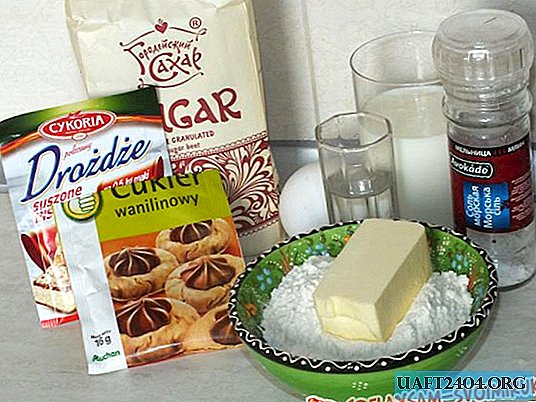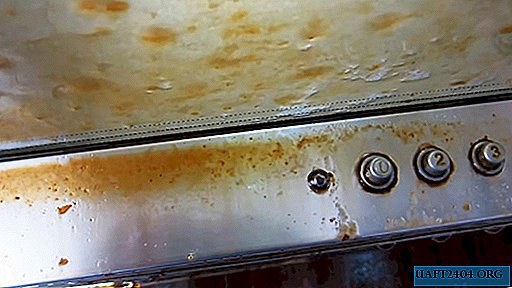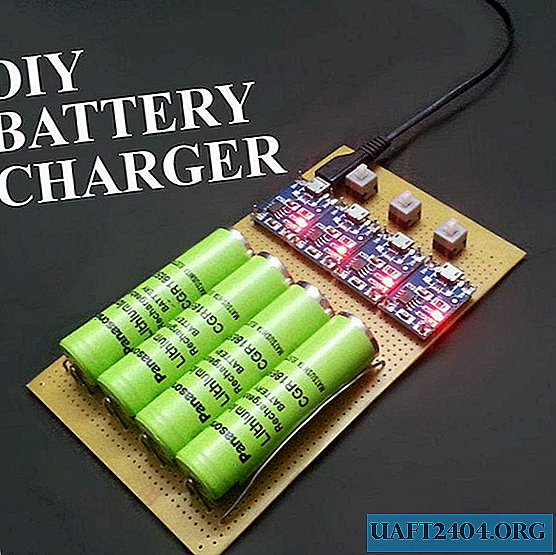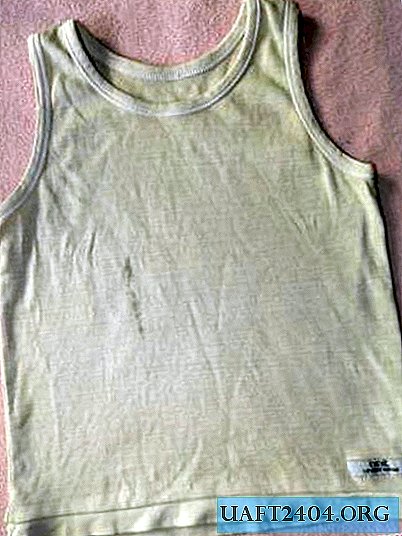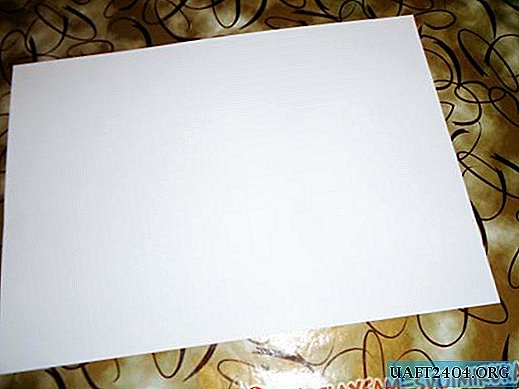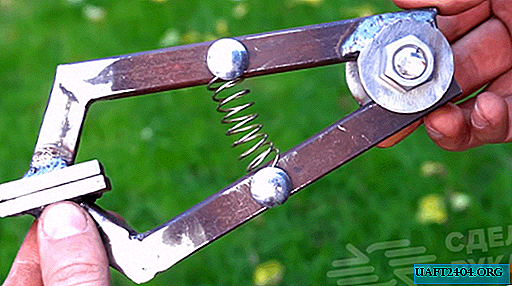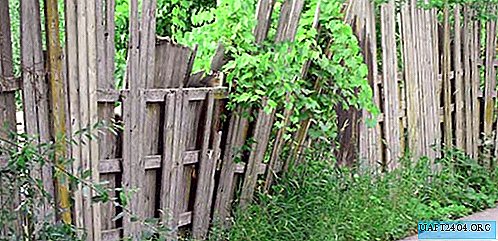
Today, many owners of private houses choose a cheap fence from corrugated board as a fence. And this is entirely justified, since such designs provide an opportunity to save time and money. But always remember - saving should be economical, but within reasonable limits, so that in the future there are no unforeseen force majeure in the form of additional financial costs. Therefore, it is extremely important to learn how to choose the right material, and to observe the basic requirements for the installation of profiled sheets. Read more in this article.
Useful Tips
If it is not possible to build a capital stone fence on the territory, then an alternative in this situation - a fence from corrugated board - is cheap and cheerful, as they say. As the main building material for it, metal sheets of various profiles are used, which are popularly called corrugated board.

This is one of the most affordable, inexpensive and convenient building materials, which is considered to be the best in terms of installation work. The installation of such a fence can be carried out in a short time on their own or with the help of wage labor. But always remember that the main thing is that unskilled craftsmen and frankly cheap materials may not justify your expectations. Therefore, either do everything yourself, on the advice of professionals, or employ exclusively competent and experienced specialists to work.
Fencing from corrugated board is the cheapest fence, however, in order for it to serve faithfully for more than a dozen years, you must very responsibly and competently approach the choice of material and the installation process itself. Experienced craftsmen know that for any type of enclosing structures, it is strength characteristics that are extremely important. A good fence from the "default" corrugated board is required to easily withstand various mechanical stresses and aggressive environmental influences. Otherwise, what's the point?
Very often, in order to save money, they choose a corrugated profile with a thickness of 0.4 mm or even less. As a result, in just a few years of operation, the fence acquires an unpresentable appearance: it becomes covered with multiple dents and loses its aesthetic appeal. Please note that profiled sheets with a thickness of 0.5 mm differ slightly in terms of price, but their use will ensure the safety of the attractive appearance of the protective fence.
The subtleties of installing a fence

- The greater the distance between the individual metal supports of the fence, the less profile pipes will be needed, respectively, the lower your financial costs. However, saving a lot is not recommended. The quality of the entire fence will depend on the quality of the metal frame made - always remember this. In this case, experienced professionals strongly recommend mounting steel poles at a distance of about 2.5 meters. It is this arrangement that will significantly reduce the value of the mechanical load on the corrugated board.
- If the distance between the posts will be about 3 meters or more, then profiled sheets, no matter how securely they are fixed, will always experience significant mechanical stress, and may begin to deform over time. When the metal supports are not well fixed, it is very likely that at one point you will find a fence lying on the ground. Therefore, save wisely. The durability of the building envelope directly depends on the strength of the fastening of the metal supports.
Tips from professionals
Sometimes, in order to reduce the cost of building a fence, in practice, short metal pipes are often used. Usually they are driven into the ground to a shallow depth or dug into the soil by a maximum of 30-40 cm, while concreting in this case most often plays a purely symbolic role. You don’t need to do this, because after a few years with prolonged and strong gusts of wind, the fence from the profiled sheet can simply fall.
To avoid this, it is necessary to select exclusively profiled pipes (60x60 mm) with a length of at least 3 meters for the installation of rack supports. The steel pipe should be located in the ground at a depth of 1.20 meters. This is a prerequisite, the implementation of which will guarantee the reliability and safety of the finished metal during operation.

Very often, inexperienced craftsmen suggest using unpainted sheets, assuring that they will perfectly cope with any "symptoms" of corrosion, since they are hot-dip galvanized during the production process. But in practice, it turns out that after 1-2 years on the outer surface of the unpainted profiled sheet it is more likely that shapeless dark spots will begin to form, and over time the product will lose its pristine sheen. Therefore, for reliable protection against corrosion "plaque" it is required to apply more radical methods, for example, surface treatment of sheets with polymers, and it is better to use ready-made painted products.
Applying these recommendations in practice, you will be able to make the fence from corrugated board truly stable, durable and reliable.
Basic installation rules
For fencing from corrugated board, the height of which does not exceed 2.5 meters, it is better to use special profiled sheets of the "C" brand with a corrugation height of not more than 21 mm - in this case this is the most optimal option. If the height of the metal fence is over 2 meters, as well as in the presence of strong mechanical loads, it is more advisable to use materials of the grade c20 and c21.
It is also necessary to pay attention to the characteristics of the coating of profiled sheets, which are currently on sale in several basic versions: galvanized or polymer surface. Experts advise to purchase material with a polymer coating. Its price is more expensive than galvanized sheets, but the high cost is more than compensated by the duration of its operation. At the first stage of the construction of the fence from corrugated board, it is necessary to mark the territory. After that, the foundation is laid. Some masters recommend abandoning concreting, but remember that these tips are far from always useful, since the posts driven into the ground can only be used on certain types of soil. Today, 2 types of foundations are most often used: a tape, which is arranged throughout the fence, and local, when only poles are concrete. The second option is less time consuming, but the first is more reliable.
At the first stage of the construction of the fence from corrugated board, it is necessary to mark the territory. After that, the foundation is laid. Some masters recommend abandoning concreting, but remember that these tips are far from always useful, since the posts driven into the ground can only be used on certain types of soil. Today, 2 types of foundations are most often used: a tape, which is arranged throughout the fence, and local, when only poles are concrete. The second option is less time consuming, but the first is more reliable.
Detailed work plan
- First of all, it is necessary to drill holes at least 1 meter deep.
- After that, it is advisable to lay a roofing material on the bottom, which will serve as a waterproofing.
- Then the pipes themselves are installed and the concreting process is carried out.
- Before proceeding with the installation of poles, you need to decide on the choice of material. If you use profiled posts made of metal, you should definitely take into account some nuances. The optimum thickness of the pipe should be at least 2-3 mm - this will provide the necessary parameters of rigidity and strength characteristics. Dig steel poles into the ground to a depth of 1.15 to 1.5 meters. This will provide the supports with good stability.
It must be remembered that the installation of absolutely any pillars for the fence supports is repelled from the corner element. Some craftsmen begin installation from the central pillar, which is located in the middle, but this is not right. - The next step is to install additional jumpers between the concreted supports. Jumpers are transverse beams of a certain section, on which corrugated board will subsequently be attached. The number of jumpers directly depends on the height of the fence. At a height of 3 meters, it is advisable to use at least 4 pieces.
- After completing the basic installation work, it is necessary to paint the metal frame in order to protect it from rust. After rains, very often rusty smudges form on the inside of the metal fence from the jumpers - it looks, to put it mildly, not aesthetically pleasing.
- The final moment of installing the fence is directly installing the corrugated board on the metal frame. The fastening of profiled sheets is carried out using special screws with a rubber gasket and a drill at the end. One of the most pleasant moments of the device fencing from corrugated board is the lack of need for the use of special equipment, since the sheets are quite light - the weight of 1 m2 does not exceed 5 kg.

